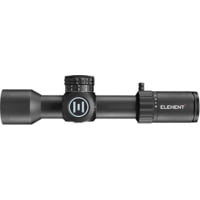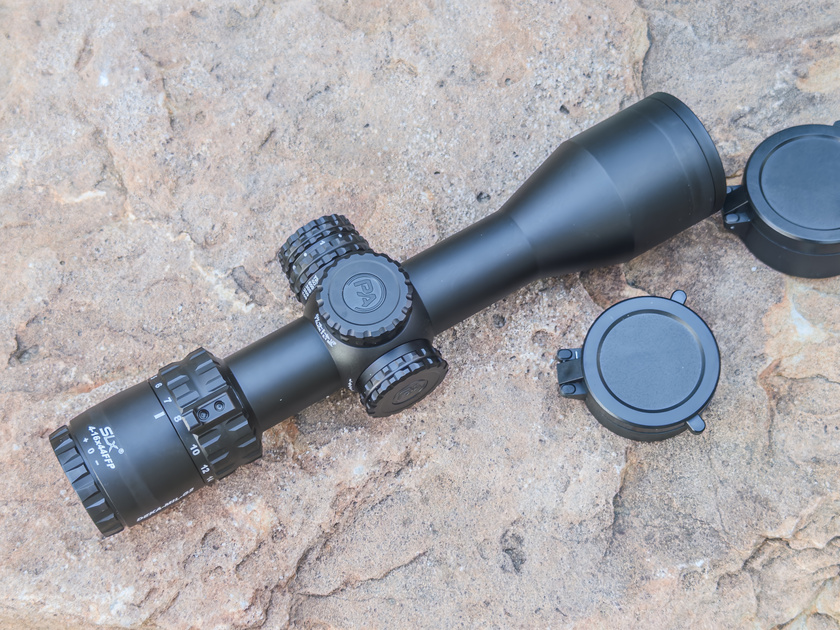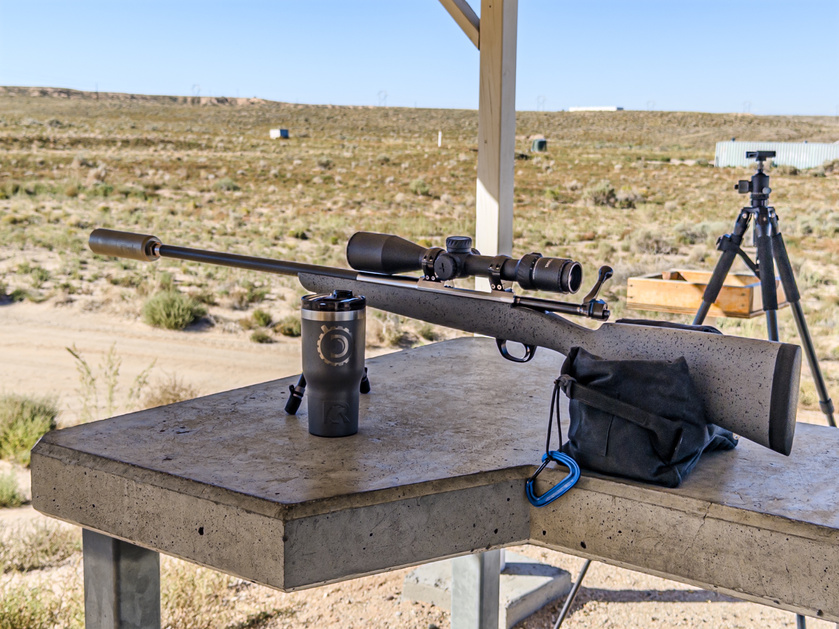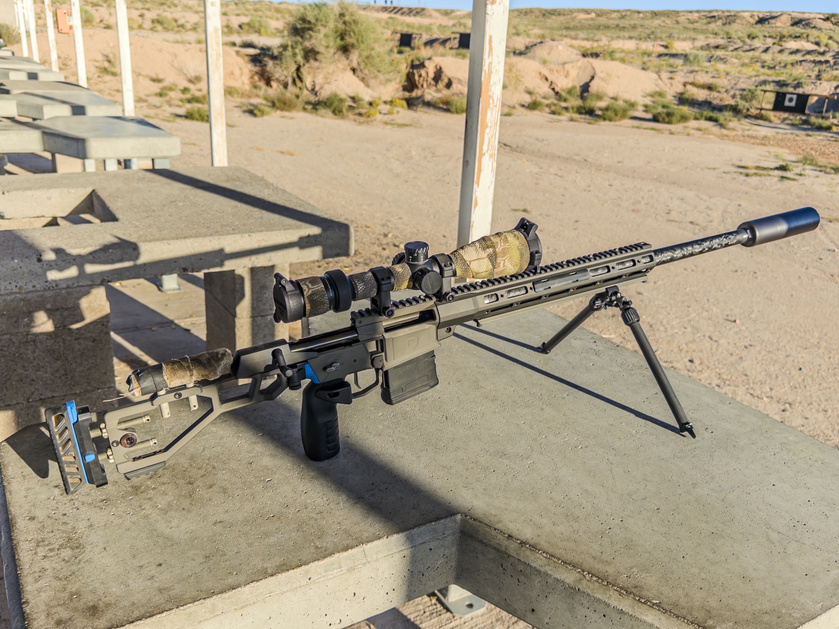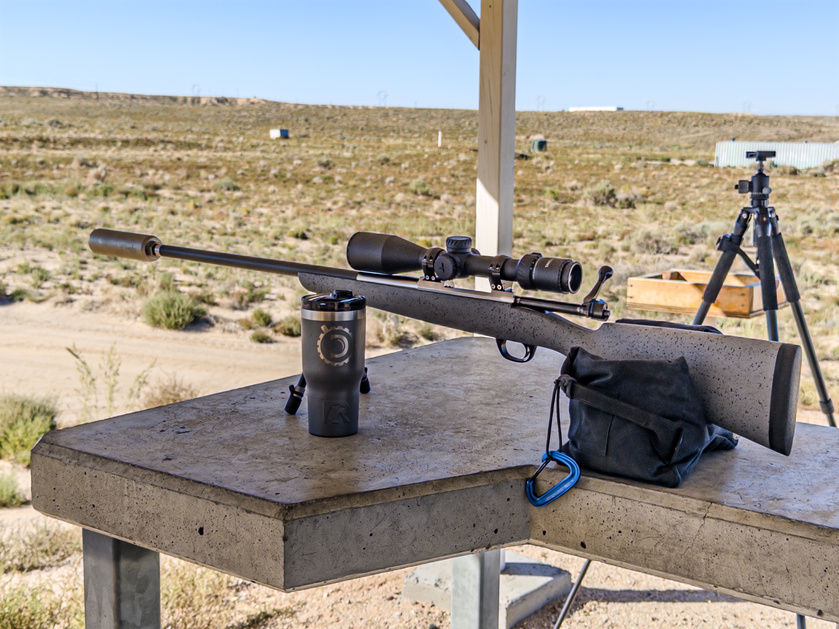Jetlag is a bitch. What does that have to do with magnification? Absolutely nothing. I am in Israel at the moment with work and jetlag joining forces to very thoroughly kick my ass. I have this whole list of prepared topics I want to cover and I find myself sitting and staring at them like an imbecile trying to remember how I planned to address them. Perhaps, I am just having a Biden moment, but I prefer to blame work and jetlag.
Anyway, here is an interesting phenomenon that I only encountered recently: shooters who have no experience with magnification. I do not think it is a very widely spread situation, but it clearly happens since a good number of statements to that effect stood out to me on a few forums and discussion boards recently. Interestingly, a lot of these guys seem to be fairly competent gun guys, they just to be coming into this from a completely different angle that I am used. I am a precision guy at heart and I hunt. Historically, I spend most of my time telling people that out in the real world, very frequently, less is more and you should not overdo magnification. However, there is a ton of people out there, it seems, who come into this from handguns or shotguns or red dot equipped ARs. They have no experience with magnification at all.
Here is a direct quote from a Discord discussion, copied with the permission of the guy who posted it: "I don't have any sort of on-board magnification. I do have some binoculars, but the compact pair seem to be cheap, have poor light transmission, and don't make sense (labels read 20x magnification which is definitely not the case), and the other, more solid pair are bulkier"
Now, to be fair, I have no idea if he has experience with other firearms that do have magnification, but for the sake of the argument let's assume he is a one gun kinda guy. That frequently means that he actually knows how to use it. I'll also make an assumption that he has some sort of a reasonably decent red dot sight already on the gun.
Before we talk about magnification, let's revisit what that magnification is used for:
-increased aiming precision
-improved target identification
-surveillance and observation
The first requires for the magnifying optic to be on the gun.
The latter two can be done with either a weapon mounted optic or a standalone. If it is a weapon mounted optic, you have to be comfortable pointing a gun at thing you may or may not be shooting at. Generally, for the latter two, for civilians like most of us are, I strongly lean toward a standalone optic, for a variety of fairly obvious reasons.
The standalone optic can be either a monocular or a binocular depending on whether you prioritize ease of observation or compactness. If you will be staring through the optic for a long time, a binocular is your best bet. Using two eyes, assuming a decent quality binocular, will usually result in better image quality and lower eye fatigue. However, if you need to take a fairly quick look a monocular might be a more compact option.
The market is not awash in high quality compact monoculars, but most LRFs (Laser RangeFinders) are essentially monoculars with a little extra. I very frequently have my Leica CRF 3500.com with me if I do not think I will spend too much time staring through the optic. It is not cheap, but as far as observation quality goes, it is really a rather nice 7x24 monocular. It also does not hurt to know how far whatever I happen to be looking at really is. It is not cheap, but there are much less expensive LRFs out there. They may not be quite as good optically, but still a lot better than looking around with the naked eye. Leica CRF 3500.com 7x24: https://bit.ly/3aRrmXB
In the lower price ranges, I have had good luck with Vortex Razor and Sig Kilo LRFs, although Athlon's Midas 1 Mile also offers a lot of bang for the buck.
Technically, you can also have a LRF equipped binocular, but most of them are fairly large. The smaller ones Leica's new 32mm Geovids and GPO's 32mm Rangeguide, but I have not tested either. I hear good thing though.
Neither is inexpensive though and if you are looking to stay on a budget, there are several relatively inexpensive binoculars that, to be honest, everyone should have at least one of.
One of things you'll notice as I talk about the binoculars is that they are all of comparatively low magnification. In the original quote above, the gentlemen I quote mentions compact binoculars of 20x magnification, but says that he can's see anything, so he doubts whether they are really 20x. They probably are indeed 20x and that is one of the key reasons he can't see anything useful through them. They are, by definition, also cheap crap of some sort because I am not aware of any reasonable manufacturer who would put their name on a compact 20x binocular. It is not physically possible to make a compact 20x binocular that is good. I could probably come up with a digital one that would sorta work, but even that would not be easy especially due to stabilization concerns. With compact binoculars, you want to keep magnification moderate. It is very hard to handhold a high magnification binocular and light weight makes it even harder. For normal size binoculars, the practical limit for what normal people can handhold is somewhere between 7x and 10x (there are some individual differences). With larger designs and steady hands, you can go up to 12x, but even with full size binoculars at moderate magnifications you will see better off of a tripod. With compact binoculars, I strongly recommend keeping the exit pupil at 4mm or more if possible (exit pupil is objective diameter divided by magnification), which means keeping magnification low. We live in a world where a lot more people buy binoculars than use them, so low power options that do not look very sexy on paper do not sell very well. That is unfortunate because they are very easy to use without taking up too much space. If I am out on a hike or simply want to keep my pack weight down, I usually have a 6x to 7x binocular with me. Historically, it has been a first gen Vortex Viper 6x32. That has been long discontinued and I have added a few more low power options to my collection since that are actually available for purchase. I wish they were available with a ranging reticle of some sort, but unfortunately that is not in the cards. The cheapest option is the Kowa YF porro prism design. It is not the small owing to the porro configuration, but it is lightweight, inexpensive and surprisingly good for the money. Kowa YF 6x30: https://bit.ly/3B0dQeL If you are an infrequent user and you really do not want to spend much money, just get this one. It is not going to get lower than $100. With nice stereoscopic effect and a 5mm exit pupil, it is easily my pick for a budget option.
If you want something with a little less footprint, but good image quality and without sacrificing exit pupil, sticking with Kowa, but stepping up to the 6.5x32 BDII is your best bet: https://bit.ly/3tuBDyT I have been torturing this binocular for a little while now and it has become one of my favourites. It has maintained collimation despite some rather rough treatment and image quality punches well above its weight class.
Lastly, the binocular that lives in my truck is another porro design and this one is from Steiner. The 7x32 Navigator is the individual focus design which, essentially, just means that each barrel is focused individually for your eyes. In practical terms, you just get these focused for some reasonably distant target and never touch the focus adjustments again. It will work just fine from 50 yards or so out to infinity. To inspect something closer, you have to mess with the focus adjustments again, which I dislike doing. That's the disadvantage. The advantage is that there is a lot of depth of field and if I just need to grab a binocular to examine something fairly distant, I do not need to worry about focusing. It is a nice pleasing view with excellent 3D effect due to wider objective separation endemic to porro designs: https://bit.ly/3OcprKQ
Now, let's switch gears a bit and talk about adding weapon-mounted magnification. There are a couple of ways to do it, depending on whether you are looking to augment what you have or replace it. Given my baseline assumption that we are dealing with a competent shooter, it is probably best to not rock the boat. That means adding a magnifier to a red dot sight that is already on there. In principle, we could consider switching to an LPVO or a prismatic and setting up the red dot as an offset or piggybacked sight. However, that requires re-training which is nice to avoid in this case. Also, keep in mind that not all red dot sights play well with magnifiers. Let's assume what he's got there is something perfectly normal and reliable like an Aimpoint Micro or some other good quality enclosed reflex sight.
In principle, one of the better solution for this situation was proposed a long time ago by Aimpoint with their twist mount. Most modern magnifiers are mounted in flip-to-side mounts where, if you want an unadulterated view of the red dot, you just flip the magnifier to the side. It remains attached to the rifle, but you are not looking through it. There are a few different variations on this them out there, like Unity Tactical's FAST mount, but it is all the same basic idea. Aimpoint does offer a flip-to side mount, but they also have a less popular twist mount. With the twist mount, you can quickly remove the magnifier from the gun to use it as a handheld monocular. It has the advantage of being able to look at things without pointing your gun at them and of removing some weight from the gun when you do not need magnification. The downside, of course, is that you have an extra piece to store and that most magnifiers do not have a ton of magnification. Aimpoint's mount is set up for any magnifier that is built in a 30mm tube and all the good quality modern magnifiers are not. I use Aimpoint's 6x magnifier in this fashion, but it is a really expensive option: https://bit.ly/3OkUNyZ
In principle, any modern magnifier that sits in a QD mount can be used like this. Removing it from a rifle and holding it in your hand is a little more cumbersome, but it works. Good options for that are Sig's Juliet4 https://bit.ly/2NKcuhL and Vortex Micro 6x https://bit.ly/3B3CUSs
If you are not looking for something to be used both on the gun and handheld, i.e. add a magnifier in a flip mount and leave it on the rifle, I'd likely sacrifice some magnification to get the smallest available option which, for the time being, is probably Primary Arms' SLx Micro 3x with PEgasus ranging reticle: https://bit.ly/3DnfGFR
What do I personally do? or where would I start? Honestly, I would make sure I have some sort of a standalone monocular or binocular and, since everyone should have a laser rangefinder, I would probably start there.



